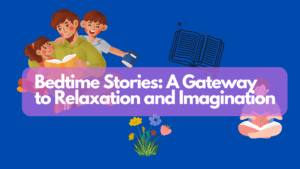
Introduction
Separation anxiety is a common yet challenging experience for many children as they grow. This emotional distress, triggered when a child is separated from a caregiver, can disrupt childhood development and lead to a separation disorder if not managed properly. As parents, understanding and addressing separation anxiety is crucial to ensuring healthy child development. This blog will explore effective strategies for empowering your child to navigate separation anxiety, focusing on key aspects such as identifying symptoms, practical coping mechanisms, and long-term developmental benefits. Whether your child is an infant, a preschooler, or anywhere in between, this guide will provide you with valuable parenting guides.
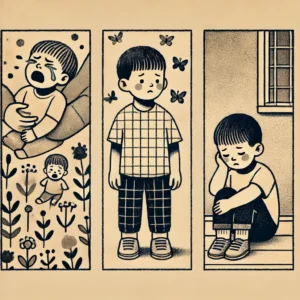
Understanding Separation Anxiety
What is Separation Anxiety?
Separation anxiety is a natural part of childhood development, typically emerging between 6 months and 3 years of age. It manifests when a child becomes distressed at the thought of being separated from their primary caregivers. This anxiety can vary in intensity, but it is an essential step in a child’s emotional growth, helping them develop a sense of security and attachment.
Common Triggers
Children may experience separation anxiety in various situations, such as starting daycare, transitioning to a new environment, or even during bedtime. Understanding these triggers can help parents anticipate and mitigate their child’s anxiety, ensuring smoother transitions and less emotional turmoil.
The Role of Developmental Stages
Different developmental stages bring unique challenges. Infants, for instance, may become anxious when they realize that their caregiver is not in sight, while separation anxiety in preschoolers may manifest as fear that something bad will happen to them or their parents during separation. Recognizing these stages helps in tailoring specific strategies to address separation anxiety effectively.
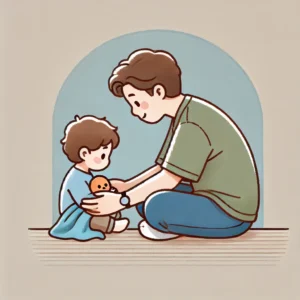
Identifying Symptoms in Your Child
Emotional Signs
Children with separation anxiety often exhibit emotional distress, such as crying, clinging to parents, or expressing fear of being alone. These emotions are typically intense and can seem overwhelming for both the child and the parents.
Physical Symptoms
Separation anxiety can also manifest physically. Symptoms may include headaches, stomachaches, or even difficulty sleeping. These physical reactions are a child’s way of expressing their anxiety and should not be overlooked.
Behavioral Changes
Changes in behavior, such as refusal to go to school or participate in activities, are common in children experiencing separation anxiety. These behaviors often stem from the child’s desire to avoid situations that cause distress, leading to further developmental concerns if not addressed.
The Impact of Separation Anxiety on Development
Short-term Effects
In the short term, separation anxiety can lead to disruptions in daily routines, such as difficulties with sleep, eating, and social interactions. These disruptions can hinder a child’s ability to engage in normal childhood activities and may lead to feelings of frustration or helplessness.
Long-term Developmental Concerns
If not properly managed, separation anxiety can evolve into a separation disorder, which may have long-term effects on a child’s childhood development. Children with unresolved separation anxiety may experience difficulties in forming healthy relationships, developing independence, and managing stress later in life.
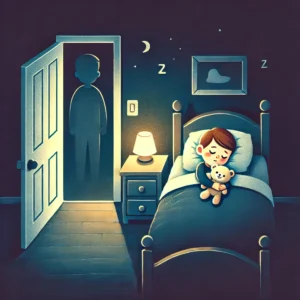
Separation Anxiety in Infancy
Developmental Milestones
Infants naturally begin to show signs of separation anxiety in infancy as they start to recognize their caregivers and form attachments. This stage is a crucial part of their cognitive and emotional development, laying the foundation for future relationships and overall childhood and development.
Parental Strategies for Infants
For infants, it’s essential to create a stable and predictable environment. Simple routines, like consistent feeding times and sleep schedules, can provide the security infants need to feel safe, even when their caregiver is not immediately present. These strategies are fundamental in dealing with separation anxiety in infants.
Separation Anxiety in Preschoolers
Recognizing Anxiety in Preschoolers
Separation anxiety in preschoolers may express itself through tantrums, resistance to going to school, or excessive worry about their parents’ wellbeing. Recognizing these signs early allows parents to address the anxiety before it escalates.
Preparing Your Child for Separation
Preparing preschoolers for separation involves gradually introducing them to new environments and people. This gradual exposure helps them build confidence and reduces anxiety when they are apart from their caregivers. These steps are crucial in supporting your child’s childhood development.
Coping Strategies for Parents
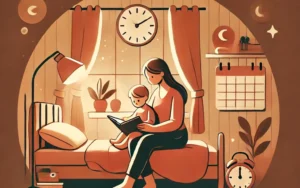
Establishing Routines
Consistent daily routines help children know what to expect, reducing parents and anxiety. A predictable schedule for meals, naps, and activities provides a sense of security and helps ease the transition during times of separation.
Building Trust and Security
Children need to feel secure in their relationships with their caregivers. Building this trust involves being responsive to their needs, offering reassurance during times of distress, and maintaining a calm and supportive presence. This foundation is essential for healthy child development.
Communication Techniques
Effective communication is key in helping children navigate separation anxiety. Parents should use age-appropriate language to explain separations, acknowledge their child’s feelings, and reassure them that they will return. Such parenting guides can greatly ease the stress of dealing with separation anxiety.
Practical Tips for Dealing with Separation Anxiety
Gradual Exposure to Separation
Gradually increasing the time spent apart can help children adjust to separation. Starting with short periods of separation and slowly extending them as the child becomes more comfortable can ease the transition. This approach is effective in managing separation anxiety in preschoolers and older children alike.
Encouraging Independence
Encouraging your child to engage in activities independently helps build their confidence and reduces reliance on caregivers. Simple tasks like playing alone or spending time with other trusted adults can foster independence, which is a critical aspect of childhood development.
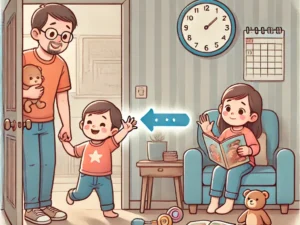
Utilizing Comfort Objects
Comfort objects, such as a favorite toy or blanket, can provide children with a sense of security when separated from their caregivers. These objects serve as tangible reminders of safety and comfort, especially during challenging times of dealing with separation anxiety.
Expert Insights on Managing Separation Anxiety
Insights from Child Psychologists
Experts in child psychology emphasize the importance of understanding the individual needs of each child. Tailoring strategies to fit the child’s personality and developmental stage is crucial for effectively managing separation anxiety. These insights align with best practices in childhood and development.
Case Studies and Real-life Examples
Real-life examples highlight the diverse ways children and parents cope with separation anxiety. These stories provide practical insights and reassurance to parents facing similar challenges, reinforcing the importance of individualized approaches to childhood development.
Addressing Separation Disorder
When Anxiety Becomes a Disorder
When separation anxiety persists and begins to interfere with a child’s daily life, it may develop into a separation disorder. In such cases, professional intervention is often necessary to provide the child with the tools needed to manage their anxiety and continue their childhood development healthily.
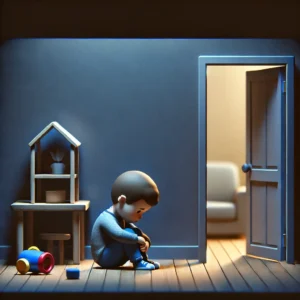
Professional Help and Intervention
Seeking help from a child psychologist or counselor can be beneficial for children with severe separation anxiety. Therapy provides a structured environment for children to express their fears and learn coping mechanisms, ensuring their childhood development stays on track.
Future Outlook on Child Development
Long-term Benefits of Overcoming Separation Anxiety
Children who successfully navigate separation anxiety often develop stronger emotional resilience and independence. These skills are essential for their long-term childhood development and overall well-being.
Emerging Trends in Child Psychology
New research in child psychology continues to explore innovative methods for supporting children through separation anxiety. Understanding these trends can help parents stay informed and adopt the best practices for their child’s childhood and development.
Recap of Key Points
Separation anxiety is a natural part of childhood development, but it requires careful attention to ensure it does not hinder a child’s growth. By understanding the symptoms, employing effective coping strategies, and seeking professional help when necessary, parents can empower their children to overcome separation anxiety and thrive.
Remember, every child is different, and there is no one-size-fits-all approach to managing separation anxiety. Stay patient, remain supportive, and trust in your child’s ability to navigate these challenges with your guidance. Your efforts today will lay the foundation for their emotional health and resilience in the future.



